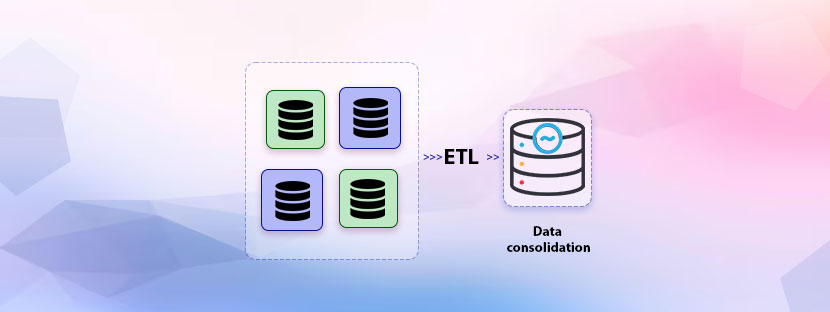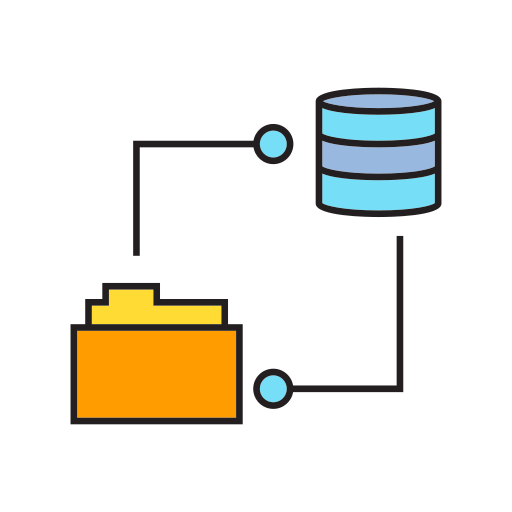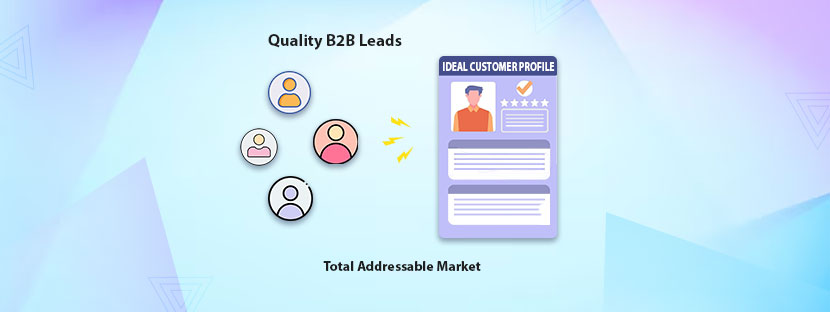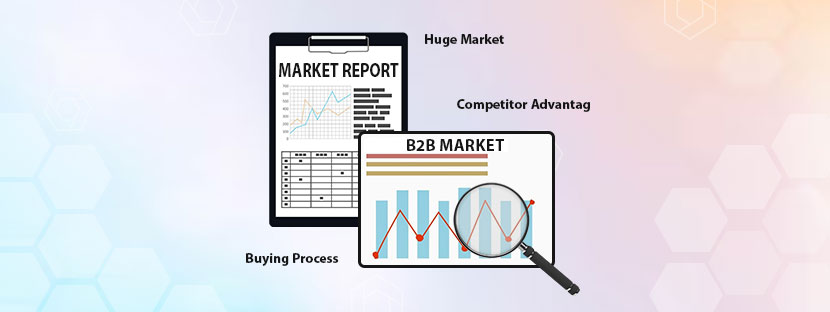In This Article
Do you work with random data? Or pick data from anywhere randomly?
If yes, you are potentially pushing your employee to waste time finding data. As per Coveo’s Workplace Relevance Report 2022, nearly 30% of working hours (3.5 hours on average) are wasted searching for the right information.
So what’s the solution? Well, you need to consolidate the database in order to prevent wasting time on data searching. With a consolidated database, you can save productive business time and enhance the application of data in your business operations.
Let’s learn how to consolidate your database with the help of this blog.
Consolidate Data Meaning
Imagine how faster your operation would become when you have a solid database as your backup. Simply, your employees or data users can seamlessly find out what they need from this compact database.
That’s the power of a consolidate database!
Imagine how faster your operation would become when you have a solid database as your backup. Simply, your employees or data users can seamlessly find out what they need from this compact database.
Database consolidation aims to combine multiple sets of data into one single data computing framework. You can store the consolidated database in the cloud or on-site locations also.
Mostly, big companies like Microsoft, Oracle, Google, etc have a dedicated database consolidation process to manage their data operations as per organizational goals. So, it’s a crucial thing to maintain your database in a consolidated format.

Importance of Consolidate Database
Let’s get straight into the benefits of having a consolidated database.
Save You from Data Silo: Discoverability of your data would increase when you arrange it in the right order. It prevents data silos.
Provide Data Safety: Arranging database in the right order improves security standards and compliances. It strengthens data governing facilities.
Simultaneous Database Management: Seamlessly manage multiple databases after getting your database consolidated.
Best Techniques to Consolidate Database
Preparing a unified data repository is the main aim of data consolidation. You can make it in different ways following these techniques.
#1. Hand-Coding
Extracting data from multiple databases and molding them in the right order using manually written scripts falls under the hand-coding method. Applying this method requires high technical knowledge.
Consolidating databases via the hand-coding method provides enough space for customization. Thus, you can tailor it according to your business needs. Plus, you have better control over your data.
On the downside, it may consume much time to consolidate the database due to hand-coded format. Additionally, you need highly skilled developers to deploy this technique correctly to your database.
#2. Deploying Software
Dedicated ETL software holds the capacity to connect different data points under one platform. You can get your desired format to store your data and overall, simplify the entire process through using software.
Using software increases efficiency in your operation as it automates many time-consuming repetitive tasks. Plus, ETL software comes with intuitive interfaces where vast technical knowledge doesn’t require that much. Additionally, software can handle large volumes of data within time.
However, it has some challenges too. First and foremost, using software in full operational capacity is an expensive deal. The cost of using the software may increase depending on data volume, formats, and other factors. Note that, technical complexities are also there in software systems too.
If you choose the second option then you must choose the right tool to consolidate database. Here, we have outlined the best and most popular tools that businesses use to consolidate their database.
Best Data Consolidation Tools
Rivery
Create efficient end-to-end ELT pipelines with Rivery, a SaaS data consolidation tool. This platform already has 200+ pre-built connectors that help in data integration. These connectors also extract data from different locations and load it into your desired database. Interestingly, using this software does not require heavy coding knowledge.
Tracking the extracted data is made easy with Rivery, through its Change Data Capture (CDC) feature. This allows you to update your database in real-time with all the latest information. Along with that, this platform offers file storage options, data warehousing options, and other important ETL measures.
Pricing: The professional plan at Rivery starts from $1.20 but the starter plan starts at $0.75.
Stitch
Stich is a powerful ELT platform that helps you create cloud-based data pipelines within minutes without writing a single code. This platform demands zero maintenance for extracting and arranging data.
With its advanced scheduler (feature), you can set time for extracting data and consolidating databases too. Thus, you can save dates and times when to add data to your pipeline according to your best times. Additionally, you can get the benefits of service-level agreements (SLAs) with this amazing application.
Pricing: The premium plan starts at $2,500 and for the standard plan, it starts at $100 per month.
Integrate.io
Integrate.io works best for operational ETL processes to automate the integration of Salesforce data. Through automation, it prepares data files and enables smooth B2B data-sharing options. Plus, this tool has 100+ connectors to make data integration and consolidation effortless and smooth.
Interestingly, this tool has an intuitive interface that has drag-and-drop functions that increase its user-friendliness. To accelerate your data workflow, this platform has many features like sort, filter, clone, etc. Additionally, this platform allows you to conduct reverse ETL as per your business needs. Also, you can integrate other CRM, ERP, SaaS, and other software with this platform.
Pricing: The professional plan starts at $25,000 per year while the enterprise plan depends upon customized needs.
Way Forward
Data consolidation tools play a vital role in consolidating databases in the right order. Using any tool always saves time and ensures efficiency. Well, you have some different options too like manual work. In either case, you need support and the right knowledge. Many companies prefer to outsource data consolidation services to save time. Besides saving time, outsourcing is cost-efficient too. Plus, it can help you consolidate database as per your specific needs (either using tools or manual and even both). Ultimately, the choice is up to you!
Do you work with random data? Or pick data from anywhere randomly?
If yes, you are potentially pushing your employee to waste time finding data. As per Coveo’s Workplace Relevance Report 2022, nearly 30% of working hours (3.5 hours on average) are wasted searching for the right information.
So what’s the solution? Well, you need to consolidate the database in order to prevent wasting time on data searching. With a consolidated database, you can save productive business time and enhance the application of data in your business operations.
Let’s learn how to consolidate your database with the help of this blog.
Consolidate Data Meaning
Imagine how faster your operation would become when you have a solid database as your backup. Simply, your employees or data users can seamlessly find out what they need from this compact database.
That’s the power of a consolidate database!
Imagine how faster your operation would become when you have a solid database as your backup. Simply, your employees or data users can seamlessly find out what they need from this compact database.
Database consolidation aims to combine multiple sets of data into one single data computing framework. You can store the consolidated database in the cloud or on-site locations also.
Mostly, big companies like Microsoft, Oracle, Google, etc have a dedicated database consolidation process to manage their data operations as per organizational goals. So, it’s a crucial thing to maintain your database in a consolidated format.

Importance of Consolidate Database
Let’s get straight into the benefits of having a consolidated database.
Save You from Data Silo: Discoverability of your data would increase when you arrange it in the right order. It prevents data silos.
Provide Data Safety: Arranging database in the right order improves security standards and compliances. It strengthens data governing facilities.
Simultaneous Database Management: Seamlessly manage multiple databases after getting your database consolidated.
Best Techniques to Consolidate Database
Preparing a unified data repository is the main aim of data consolidation. You can make it in different ways following these techniques.
#1. Hand-Coding
Extracting data from multiple databases and molding them in the right order using manually written scripts falls under the hand-coding method. Applying this method requires high technical knowledge.
Consolidating databases via the hand-coding method provides enough space for customization. Thus, you can tailor it according to your business needs. Plus, you have better control over your data.
On the downside, it may consume much time to consolidate the database due to hand-coded format. Additionally, you need highly skilled developers to deploy this technique correctly to your database.
#2. Deploying Software
Dedicated ETL software holds the capacity to connect different data points under one platform. You can get your desired format to store your data and overall, simplify the entire process through using software.
Using software increases efficiency in your operation as it automates many time-consuming repetitive tasks. Plus, ETL software comes with intuitive interfaces where vast technical knowledge doesn’t require that much. Additionally, software can handle large volumes of data within time.
However, it has some challenges too. First and foremost, using software in full operational capacity is an expensive deal. The cost of using the software may increase depending on data volume, formats, and other factors. Note that, technical complexities are also there in software systems too.
If you choose the second option then you must choose the right tool to consolidate database. Here, we have outlined the best and most popular tools that businesses use to consolidate their database.
Best Data Consolidation Tools
Rivery
Create efficient end-to-end ELT pipelines with Rivery, a SaaS data consolidation tool. This platform already has 200+ pre-built connectors that help in data integration. These connectors also extract data from different locations and load it into your desired database. Interestingly, using this software does not require heavy coding knowledge.
Tracking the extracted data is made easy with Rivery, through its Change Data Capture (CDC) feature. This allows you to update your database in real-time with all the latest information. Along with that, this platform offers file storage options, data warehousing options, and other important ETL measures.
Pricing: The professional plan at Rivery starts from $1.20 but the starter plan starts at $0.75.
Stitch
Stich is a powerful ELT platform that helps you create cloud-based data pipelines within minutes without writing a single code. This platform demands zero maintenance for extracting and arranging data.
With its advanced scheduler (feature), you can set time for extracting data and consolidating databases too. Thus, you can save dates and times when to add data to your pipeline according to your best times. Additionally, you can get the benefits of service-level agreements (SLAs) with this amazing application.
Pricing: The premium plan starts at $2,500 and for the standard plan, it starts at $100 per month.
Integrate.io
Integrate.io works best for operational ETL processes to automate the integration of Salesforce data. Through automation, it prepares data files and enables smooth B2B data-sharing options. Plus, this tool has 100+ connectors to make data integration and consolidation effortless and smooth.
Interestingly, this tool has an intuitive interface that has drag-and-drop functions that increase its user-friendliness. To accelerate your data workflow, this platform has many features like sort, filter, clone, etc. Additionally, this platform allows you to conduct reverse ETL as per your business needs. Also, you can integrate other CRM, ERP, SaaS, and other software with this platform.
Pricing: The professional plan starts at $25,000 per year while the enterprise plan depends upon customized needs.
Way Forward
Data consolidation tools play a vital role in consolidating databases in the right order. Using any tool always saves time and ensures efficiency. Well, you have some different options too like manual work. In either case, you need support and the right knowledge. Many companies prefer to outsource data consolidation services to save time. Besides saving time, outsourcing is cost-efficient too. Plus, it can help you consolidate database as per your specific needs (either using tools or manual and even both). Ultimately, the choice is up to you!












